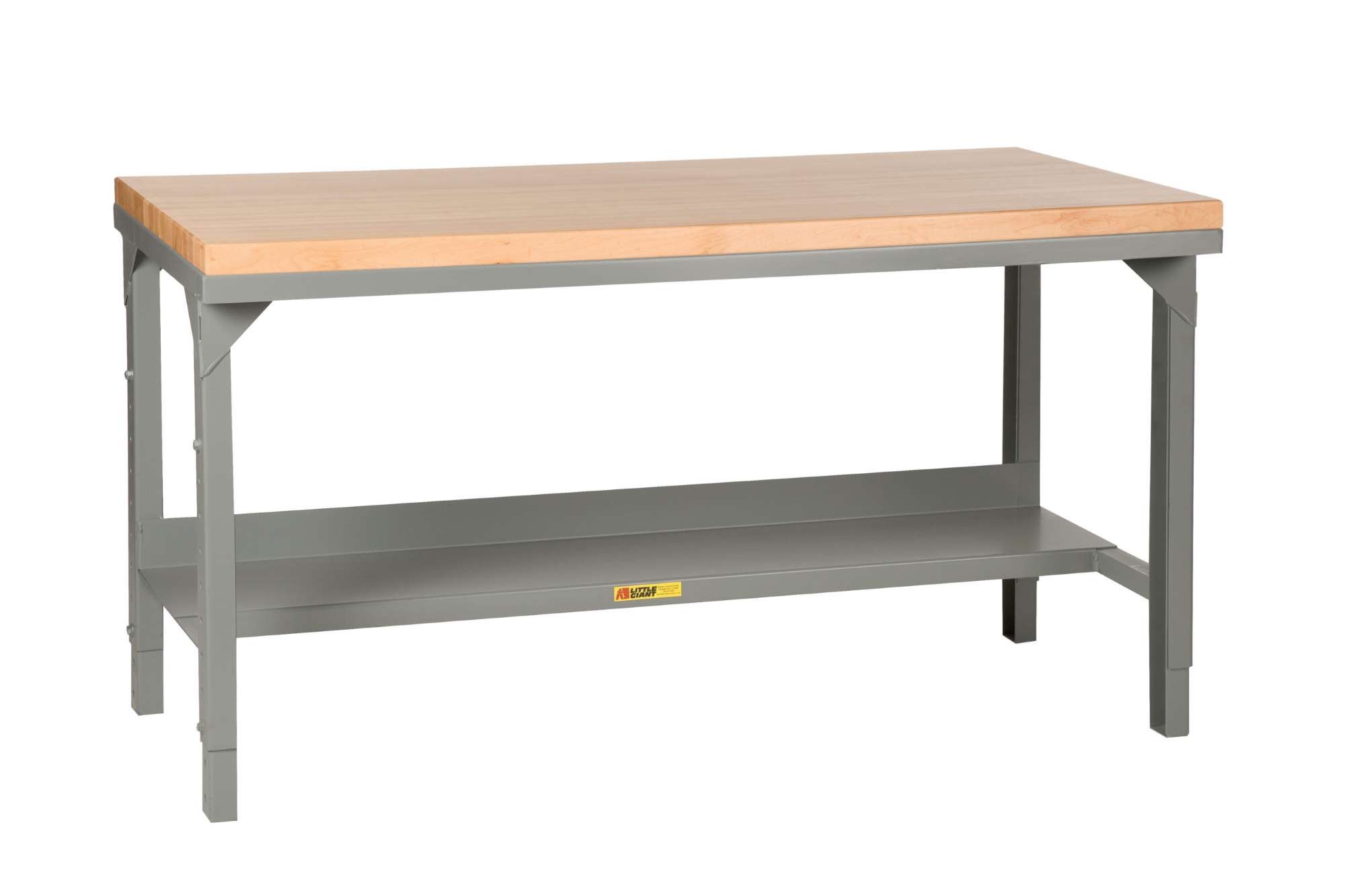Key Features & Benefits
1. Heavy-Duty Load Capacity
Each workbench in this series supports up to 3,000 pounds of distributed load — a capacity that handles heavy tooling, equipment, and materials with confidence.
2. 1¾" Butcher Block Surface
The thick butcher block top serves a dual purpose: it deadens noise and absorbs impact — a smart choice in active shop environments. Because the top is replaceable, you get longevity and serviceability without replacing the entire bench.
3. Welded Steel Frame
The benches come with a welded steel frame. This gives excellent rigidity and stability, essential when precision work or heavy loads are involved.
4. Variety of Sizes & Height Styles
From compact (24″ D × 48″ W) up to large (36″ D × 72″ W), AplusWHS offers multiple size configurations to suit different shop footprints.
They also provide both fixed-height and adjustable-height versions (adjustable height ranges from ~28¾″ to ~42¾″) so you can match ergonomic needs.
5. Lower Shelf with Backstop
A half-depth, 12-gauge steel lower shelf is standard, complete with a three-inch backstop to prevent tools or materials from sliding off.
6. Mountable to Floor
Each bench foot has a 5/8″ hole designed for secure anchoring to the workshop floor — useful in environments with vibration, heavy use, or safety requirements.
Use Cases & Ideal Environments
The butcher block benches shine in settings where rigidity and durability matter. Some ideal applications:
-
Machine shops — supporting jigs, machining operations, or tool setups
-
Electronics labs or inspection stations — the wood surface provides some thermal and vibration dampening
-
Maintenance shop benches — for mechanical repair, assembly, or parts handling
-
Prototype or fabrication shops — where you may strike clamps or tools against the work surface
Because the butcher block top is replaceable, you minimize waste and cost over the long term, especially in environments where wear, gouging, or occasional damage is expected.
Care, Maintenance & Best Practices
To maximize the life of a butcher block workbench:
-
Seal and oil periodically. Even though the primary use is industrial, applying a penetrating oil sealant helps reduce moisture intrusion and wood movement. In industrial butcher block contexts, a finishing oil is common.
-
Repairing dents or cracks. For light damage, woodworkers commonly use epoxy fills or patch splices. In more severe cases, ripping and re-gluing or replacing segments is viable.
-
Allow room for expansion. Wood expands and contracts with humidity changes, so avoid over-constraining the top.
-
Replace the top when needed. The replaceable design ensures that when the surface is too worn, the bench frame remains useful.

